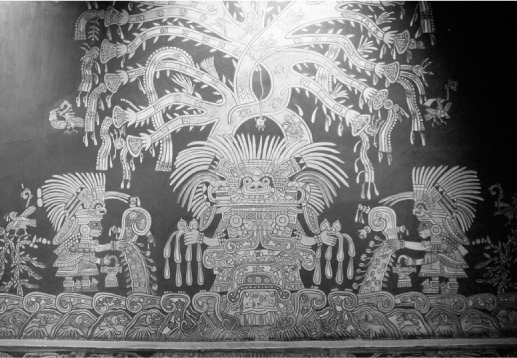Mesoamerican and South American Mythologies: Maya, Aztec, IncaMonte Alban and Teotihuacan |
Who were the Teotihuacan people? |
The Teotihuacan culture, centered in the great pyramid city just northeast of present-day Mexico City, was established in about 250 B.C.E. By 500 C.E. Teotihuacan was one of the largest and best-appointed cities in the world. Not only did it have pyramids, large public squares, and wide central streets, it had a population of about 125,000. The pyramids celebrated the gods—including the familiar Feathered Serpent/Quetzalcoatl figure—and their astronomical cognates. Pyramids such as those in honor of the sun and the moon and their related deities were decorated with mythological figures that resembled the deities depicted much later by the Toltec and Aztec. Like the Monte Alban culture, Teotihuacan collapsed in the mid-seventh century C.E.

A reproduction of a drawing of the Great Goddess of Teotihuacan based on an ancient mural.
